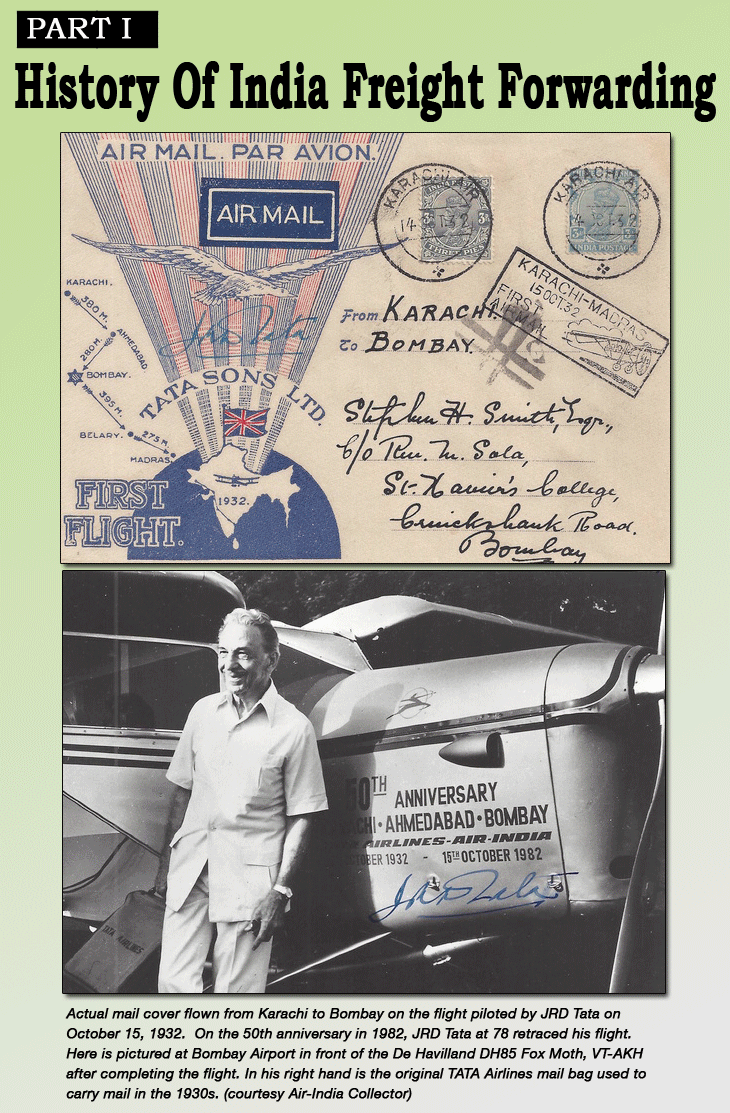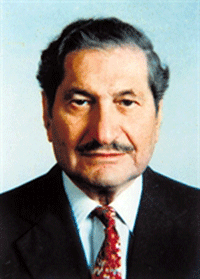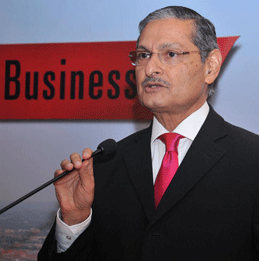
This
is the story of two friends and India air freight forwarding
yesterday and today.
Perhaps, sharing a first
name that started with ‘J’—one Jehangir
and the other Jamshed—brought them close.
Growing up together in
Mumbai, both dreamed big.
The first was Jehangir,
later simply known as JRD Tata (Jehangir Ratanji Dadabhoy
Tata), and the second was Jamshed Guzder.
Tata flew the first commercial
flight of Tata Aviation on October 15, 1932, when he
boarded a second-hand Puss Moth at Karachi (now in Pakistan)
for the flight to Bombay (now Mumbai).
Incidentally, he had
45 pounds of mail on board.
Tata is remembered—and
revered even today—for starting Air India.
The history of freight
forwarding in India is inextricably linked to JRD.
That first flight made
history in quite a few ways.
JRD wanted to show the
feasibility of airmail from London to India. Karachi
at that time was where Imperial Airways (today’s
British Airways) service started for London.
Soon after landing in
Bombay, JRD handed over the flight to his business partner,
the South African-born Nevill Vintcent, who flew all
the way to Madras (now Chennai). From there the flight
took off for its return journey to Karachi so that the
mail could be loaded on the Imperial Airways flight
to the UK.
 The
Second “J” The
Second “J”
But
the second friend, Jamshed Guzder, (left) was in a slightly
different business: moving goods.
Jamshed had inherited
AFL, one of the top freight forwarders of India.
Long before India achieved
independence in 1947, Guzder began his business as a
service provider for the British Army.
He moved army material
that came to India through Bombay.
The company was involved
in handling imported cargo along with project and plant-related
transportation.
Later, the company started
moving machinery for steel and power plants and irrigation
projects.
Jamshed
& JRD
With
the coming independence, Jamshed Guzder knew there would
be rapid industrialization and he decided to tweak the
business.
The tweaking was at the
prompting of his good friend, Jehangir Tata.
JRD told Guzder in no
uncertain terms to get into a new business: aviation!
For AFL, which had been
moving sea freight for more than 80 years, it was a
tall order. But in reality Guzder was a keen aviator.
After seeing the fleets of DC-3 and American Liberators
that had been abandoned by the British and US Air Forces
at the end of World War II, both friends were hooked.
Airline
& Forwarder
 When JRD started Tata Airlines (later to become Air
India), he asked his friend Jamshed to handle the passengers
and freight of the new airline.
When JRD started Tata Airlines (later to become Air
India), he asked his friend Jamshed to handle the passengers
and freight of the new airline.
Guzder’s AFL was
appointed as the carrier’s first sole cargo agent
in the country in 1945. When Jamshed Guzder’s
son, Cyrus Guzder, (now Chairman and Managing Director)
(right) joined the company in 1968, he brought in big
changes.
While AFL handled ground
operations for almost all the carriers touching Mumbai,
he saw an opportunity in small package couriers. In
1978, he joined hands with DHL.
Since then, the company
has moved into other businesses.
India's
Legacy Forwarders
Like
Cyrus Guzder, there are quite a few freight forwarders
serving India who have been around for well over a hundred
years. Tushar Jani, for example, has a 130-year old
history.
Founder of Blue Dart,
South Asia’s top courier and integrated express
package distribution company, he was virtually pushed
into the freight forwarding business in 1978 when his
father passed away.
That business had been
started by his great grandfather and today has seen
four generations: Tushar Jani’s daughter Bhairavi
Jani set up i3pl to provide end-to-end logistics services
to corporate clients and directs the SCA Group with
its four verticals: warehousing, supply chain technology,
cargo handling and freight forwarding, and shipping,
respectively.

Bhairavi Jani and Tushar
Jani, carrying on a four-generation tradition in
logistics. |
Natural
Evolution
The
freight forwarding business, said Tushar Jani, has evolved
over the years.
“In the early 1940s
or early 1950s, there were no freight forwarders in
this country,” he recalled.
“There were Mukaddams
and Dalals (or middlemen).
“These Dalals were
people who processed documents in Custom House.
“The Mukaddam represented
those people who brought the cargo from the customer’s
warehouse or factory to the port, completed the other
formalities, and loaded cargo on to a ship.
“He ensured the
loading on the ship and then went to the shipping line
to take a bill of lading and give it to the shipper.”
“There was a third
entity there: the freight broker.
“His job was to
book space on behalf of the exporter on the ship and
for this he got two percent brokerage from the shipping
line. This freight broker was born out of a necessity.
“The Dalal and
the Mukaddam were Indians and could not speak English—an
essential during British rule.
“So they needed
somebody who could converse in English and that is how
the broker came into the picture.”
Documenting
Shipments
“As
for documents during the early years,” Jani said,
“there was only the Bill of Lading given by the
shipping line.”
It was around 1962 that
the Indian Customs merged both these entities—the
Freight Broker and the Dalal/Mukaddam—into one:
The Custom House Agent.
“Somewhere down
the line around 1976-78, the shipping lines started
recognizing these custom house agents as freight forwarders
and started taking bookings directly from them.
“They became forwarders.”
Modern
India Air Cargo
Modern
air cargo started around 1965 and IATA came in the picture.
But only Mumbai (Bombay)
had any kind of air cargo facilities.
In those early days,
there were only a few IATA agents.
“These agents used
to bring cargo to Ballard Estate, and from there the
airline would truck it down to Santa Cruz airport.
“That was when
the air freight forwarder was born,” remembered
Jani.
He still remembers the
day in 1978 when the last of the 12 freighter charters
departed to Hungary.
Working conditions at
that point were not good.
“When the containers
came in, nobody knew how to take the container to the
factory.
“This was in 1978.
People were taking cargo to the port and stuffing it
in the container there.
“Then someone got
the bright idea that it was okay to take a container
to the factory. Somewhere in the early 80s, the containers
started going to the factories.
“While that has
changed, such a move has not taken place in air cargo.
“Over the years,
Mumbai lost its place as the only airport for cargo.
“As the number
of airports went up so did the freight forwarders.
“With government
measures in place, the business has moved ahead.”
Tanna
Chimes In
 Keshav Tanna, who also serves as a vice president of
FIATA, has been associated with the freight forwarding
industry for well over 30 years. He believes that when
the government opened up the freight forwarding Industry
for 100 percent Foreign Direct Investment (FDI), “our
Industry had undergone a sea change.” Keshav Tanna, who also serves as a vice president of
FIATA, has been associated with the freight forwarding
industry for well over 30 years. He believes that when
the government opened up the freight forwarding Industry
for 100 percent Foreign Direct Investment (FDI), “our
Industry had undergone a sea change.”
“There was a huge
influx of multinational forwarders that came into India
to set up shop.
“Gone were the
days of being merely a Mukaddam,” Tanna said.
“Now, the local
freight forwarder had to gear up to provide international
quality service levels.”
Tanna, along with many
others, said that providing world-class service was
a challenge, but it was easier to deal with than the
bigger issue—trying to keep pace with the investments
the multinational forwarders were making in the Industry.
Mr. Tanna agrees that
the credit policies and business models adopted by these
multinational forwarders were impossible to keep pace
with, but over the years home-grown forwarders have
geared up dramatically and are now able to provide similar
global services: door to door deliveries, 3PL/4PL logistics,
consolidations, inventory management, and state-of-the-art
warehousing facilities.
“Other than that,”
Tanna said, “online customs documentation was
unheard of 30 years ago when I started my career; one
had to run helter-skelter for signatures and authorizations
of various customs officials… But now, we don’t,”
he said.
Tirthankar Ghosh |





